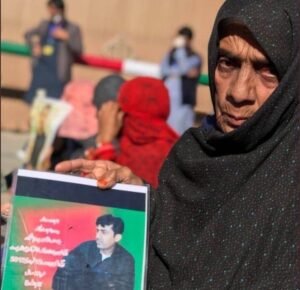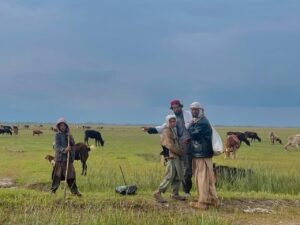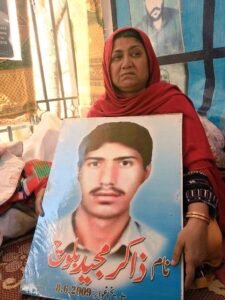Pakistan’s Economic Crisis: A Downward Spiral with No Signs of Recovery

Photo by @SS Ahmad for ADN
By A. Shafaq
Pakistan’s economic situation is teetering on the brink of collapse, with little hope of recovery in sight. A combination of political instability, inadequate planning, massive debt, and security concerns have created a perfect storm that threatens to plunge the country into deeper economic despair. As the government struggles to secure international financial aid and manage its burgeoning debt, the economic fault lines are becoming more pronounced, leaving the country in a precarious state.
The year 2024-25 began on a dismal note for Pakistan, with the country receiving just $436.4 million in foreign assistance and grants in July—a staggering 85% decrease compared to the same period last year. This sharp decline highlights the challenges the government faces in meeting its ambitious target of $19.4 billion in foreign assistance for the fiscal year, a goal that seems increasingly unattainable.
In contrast, July 2023 saw inflows of over $2.89 billion, largely due to a $3 billion Stand-By Arrangement (SBA) with the International Monetary Fund (IMF), which brought in substantial financial support from Saudi Arabia and the United Arab Emirates. This year, however, the government’s reliance on external financing appears to be faltering, with the July 2024 inflows serving as a stark reminder of the country’s precarious economic situation.
One of the most significant contributors to Pakistan’s economic woes is political instability. The country’s internal strife and power struggles have created an environment of uncertainty that has severely impacted economic stability. The lack of cohesive leadership and the inability to achieve political consensus have hindered economic progress, creating a vicious cycle of instability and economic decline.
Political stability is crucial for economic growth, as emphasized by the IMF and other international organizations. However, Pakistan’s political landscape remains fractured, with personal egos and power plays taking precedence over the nation’s welfare. A grand national dialogue to uphold the constitution and achieve political unity could provide a way forward, but such an initiative requires the political will and commitment that has been sorely lacking.
Poor planning and the lack of industrialization are other critical factors contributing to Pakistan’s economic downslide. The country’s planning apparatus is outdated and lacks the vision needed to drive economic growth. The absence of strategic priorities has resulted in missed opportunities for development and progress, particularly in the industrial sector.
Industrialization is essential for any country’s economic growth, yet Pakistan’s efforts in this area have been lackluster. The government’s failure to prioritize industrial development has left the country with a weak industrial base, unable to compete on the global stage. The rise in production costs has further exacerbated the situation, leading to the closure of industrial units and the flight of capital to other countries. This lack of industrialization is a key reason behind the country’s high poverty rates and low export levels, which stand at a mere $30 billion for a population of 250 million.
Pakistan’s spiraling debt is another major obstacle to economic recovery. With a total debt burden of nearly Rs70 trillion, including $135 billion in external debt, the country is caught in a severe debt trap. The government is now forced to take on new loans to repay existing ones, creating a cycle of debt that is difficult to escape.
The lack of a coherent debt management strategy has further compounded the problem. The economic affairs division appears to be in perpetual search of new loans, with no clear plan for retiring existing debt. This situation has left Pakistan vulnerable to economic shocks and has significantly eroded its financial stability.
The resurgence of terrorist activities in Pakistan has also had a devastating impact on the economy. The tense security situation has deterred foreign investment, leading to a sharp decline in foreign direct investment (FDI). Investors are wary of the risks associated with operating in a country plagued by terrorism, and this has contributed to the overall economic decline.
The government’s response to the security situation has been inadequate, with the state’s security apparatus failing to effectively combat terrorism. The need for a robust and comprehensive security strategy is urgent, as the current situation poses a significant threat to national and economic security.
The rapid population growth in Pakistan is another critical issue that exacerbates the country’s economic challenges. With a high unemployment rate and a large youth population lacking technical skills, the country is facing a demographic crisis. The education system is ill-equipped to provide the necessary skills for the workforce, leading to high levels of underemployment and economic stagnation.
Pakistan’s economic situation is dire, with multiple fault lines threatening to push the country further into economic decline. Political instability, poor planning, massive debt, and security concerns are all contributing to a downward spiral that shows no signs of abating. Without urgent and decisive action from policymakers, Pakistan’s economic future looks increasingly bleak, with little hope of recovery on the horizon.
A. Shafaq (pseudonym) is a researcher and lecturer at one of the private universities in Kabul.
Note: The contents of the article are of sole responsibility of the author. Afghan Diaspora Network will not be responsible for any inaccurate or incorrect statement in the articles.









